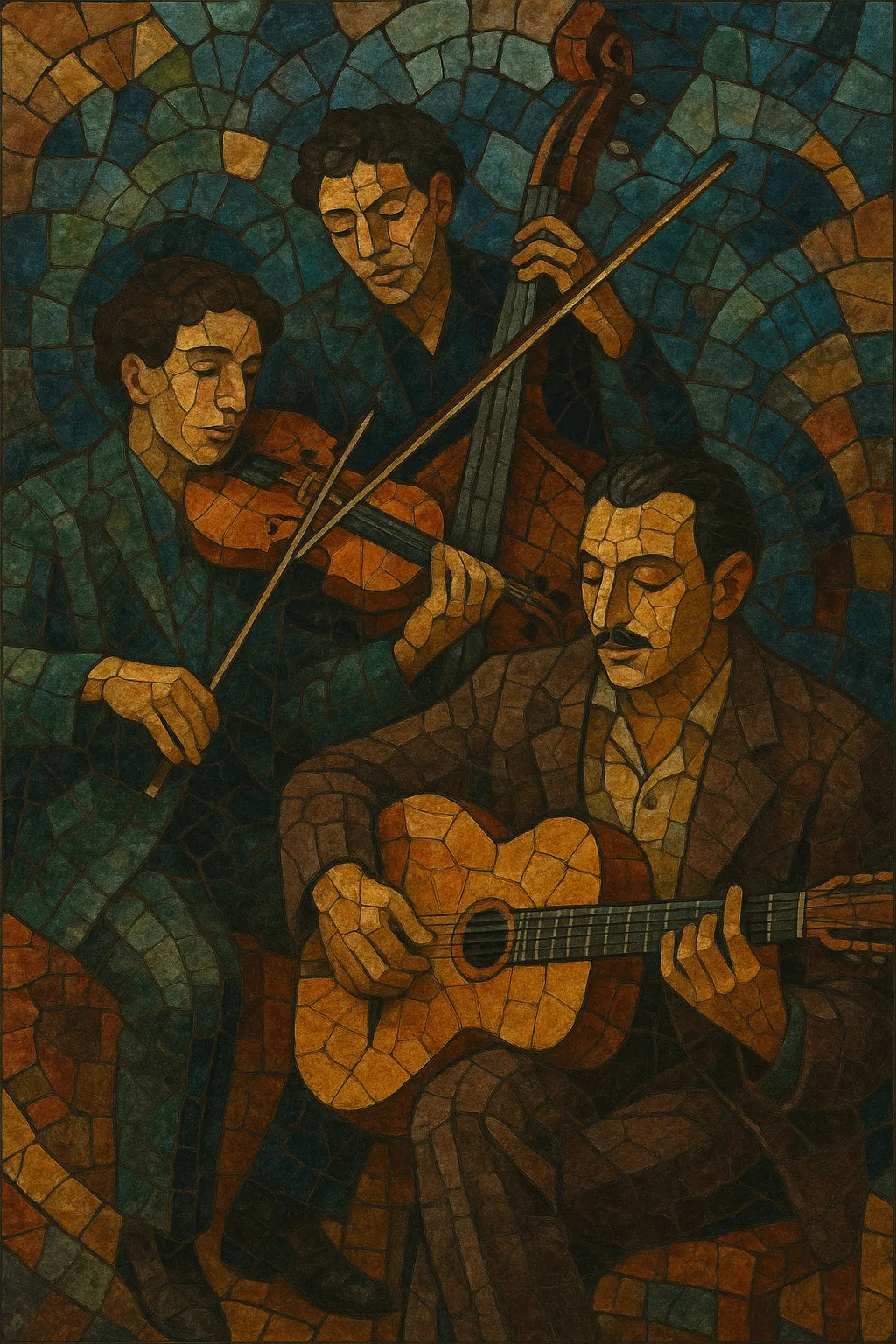Gypsy jazz (often called jazz manouche) is an acoustic, string-driven style of swing developed by Romani musicians in Paris in the 1930s, most famously by guitarist Django Reinhardt and violinist Stéphane Grappelli with the Quintette du Hot Club de France.
Its signature sound pairs percussive rhythm-guitar strumming (la pompe) with virtuosic single-note lines, violin leads, and a walking double bass, typically without drums or horns. Harmonically, it blends American swing-era jazz changes with European influences such as musette waltzes and classical voice-leading, yielding rich dominant chords, diminished passing harmony, and chromatic approach lines. The result is a bright, agile, and highly danceable style that can be both exuberant and lyrical.
Gypsy jazz emerged in Paris in the early 1930s around Django Reinhardt and Stéphane Grappelli, who formed the Quintette du Hot Club de France. Influenced by American swing and blues but performed on European string instruments, the group created a distinctive, drumless sound anchored by percussive rhythm guitar (la pompe), violin melody, and virtuosic lead guitar played with rest-stroke picking on Selmer-Maccaferri–style instruments.
World War II scattered musicians and limited international exchange, but the style persisted in continental Europe. Django’s compositions (such as “Minor Swing,” “Nuages,” and “Daphne”) and recordings became a canon, while Parisian musette waltz traditions further shaped the repertoire. After Django’s death (1953), protégés and contemporaries kept the idiom alive in clubs and on records.
From the 1970s onward, new generations—Biréli Lagrène, the Schmitt family, Angelo Debarre, Fapy Lafertin, the Rosenberg Trio—sparked revivals, refined technique, and broadened the audience. Festivals (notably the Django Reinhardt Festival associated with Samois-sur-Seine/Fontainebleau) and instructional materials helped codify the style’s techniques, repertoire, and guitar-making traditions.
Today, gypsy jazz is a vibrant global community spanning Europe, the Americas, and Asia. While many artists preserve the classic acoustic quintet sound, others fuse it with modern jazz harmony, pop, or electronic production, seeding adjacent movements and influencing styles like electro swing and aspects of the swing revival.


